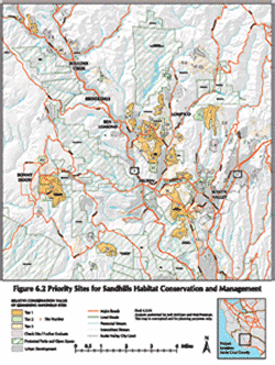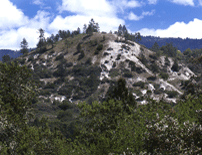
Preserving remaining habitat will be key to conserving the endemic species and communities of the Santa Cruz Sandhills. Fewer than 1,000 acres of Sandhills habitat receive some form of protection, as part of State or County parks and reserves. In the central portion of the Sandhills distribution near the towns of Ben Lomond, Felton, and Scotts Valley, where the native biodiversity is greatest and populations of the endangered Sandhills insects are known to occur, fewer than 250 acres receive some protection from development. Preservation of additional sandhills habitat will be essential to affecting the long term conservation of the endangered species and endemic communities.

As part of the Sandhills Conservation and Management Plan, a Sandhills Conservation Planning Project was conducted to prioritize unprotected habitat for preservation. Contiguous areas of Sandhills habitat ("Sandhills sites") were ranked according to their conservation value, which was calculated based on their size, biological value, and integrity, which assess the degree to which the habitat is intact and not impacted by development. Based on their ranking, the 54 Sandhills sites identified were placed into three tiers, which reflect their overall importance for regional conservation. Specific parcels that should be targeted for preservation were identified within the Tier 1 sites, based on their size, biological value, integrity, and proximity to already protected habitat.
The results of the Conservation Planning Project were provided to agencies and organizations involved in Sandhills conservation at the local, state, and federal level. Both independently and through partnerships, these entities can preserve additional habitat through several mechanisms including:
For more information about Sandhills habitat preservation, please see the Sandhills Conservation and Management Plan.


